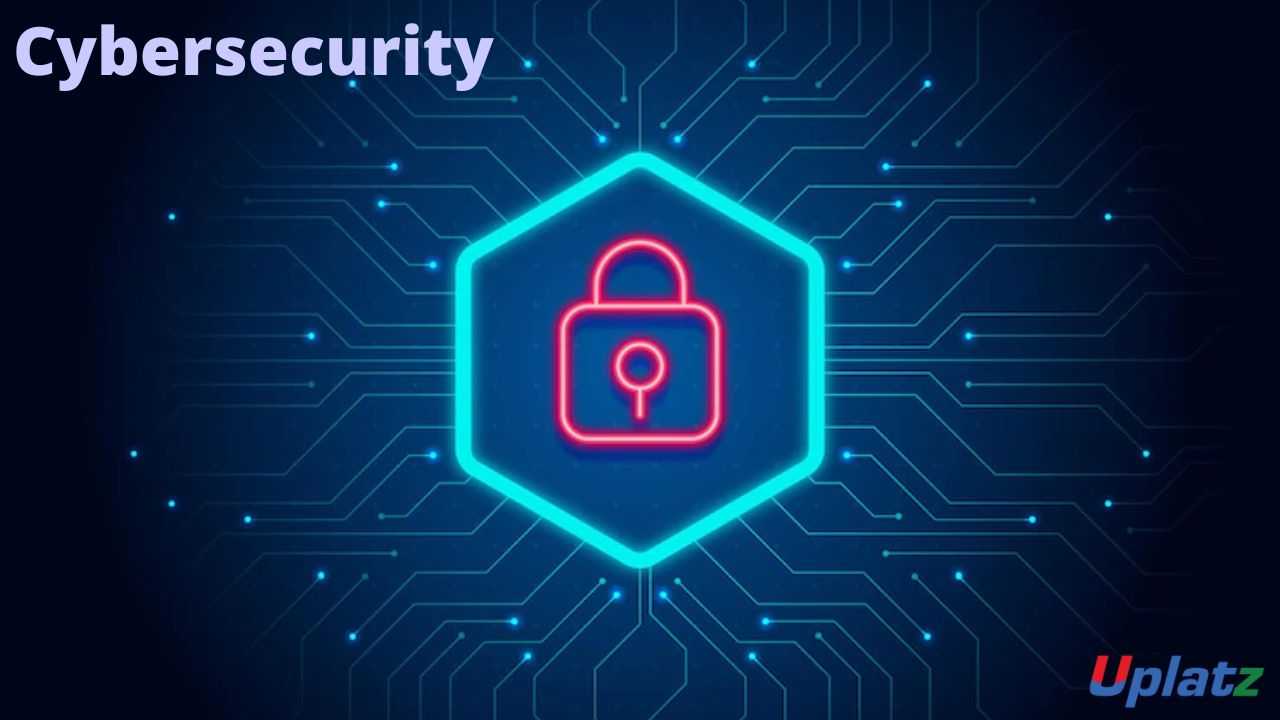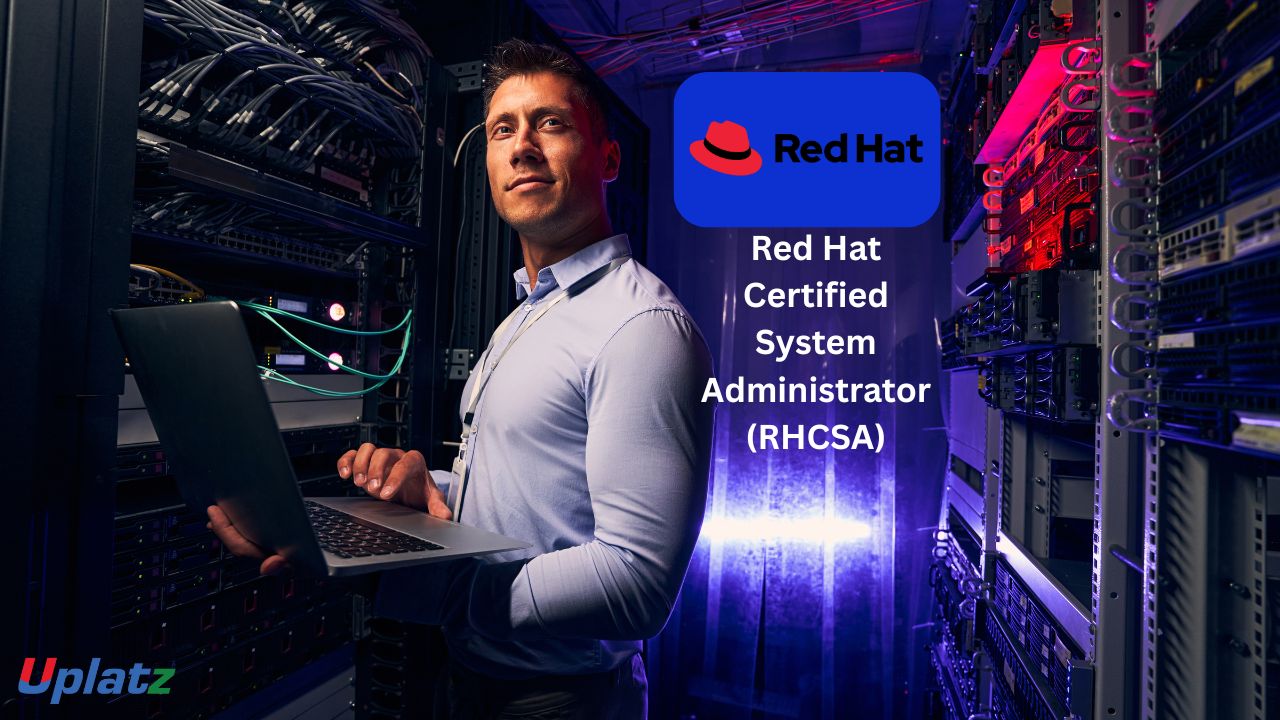Career Accelerator - Head of IT Security
Become a cybersecurity leader by mastering strategy, risk, compliance, and crisis management through hands-on training.Preview Career Accelerator - Head of IT Security course
Price Match Guarantee Full Lifetime Access Access on any Device Technical Support Secure Checkout Course Completion Certificate 92% Started a new career
BUY THIS COURSE (
92% Started a new career
BUY THIS COURSE (GBP 32 GBP 99 )-
 84% Got a pay increase and promotion
84% Got a pay increase and promotion
Students also bought -
-

- Linux Shells and Shell Programming (Bash)
- 10 Hours
- GBP 12
- 177 Learners
-

- Cybersecurity in a nutshell
- 2 Hours
- GBP 12
- 21 Learners
-

- Red Hat Certified System Administrator (RHCSA)
- 50 Hours
- GBP 12
- 1497 Learners

About the Course
In today’s hyperconnected digital world, cybersecurity leadership has become one of the most critical competencies for organizational success. The Career Accelerator – Head of IT Security is a powerful self-paced online course designed to prepare professionals for strategic leadership roles in information security. This program is tailored for individuals looking to transition into executive-level positions such as Chief Information Security Officer (CISO), Head of Cybersecurity, or IT Risk and Compliance Manager.
Delivered entirely online with full flexibility, this course offers a robust blend of theoretical knowledge, practical insights, and strategic frameworks. You’ll engage with expert-led video lessons, real-world case studies, interactive assessments, and hands-on labs that replicate industry scenarios. Each component is built to strengthen your ability to manage complex cyber threats, design secure digital environments, and align security initiatives with business goals.
Cybersecurity today is no longer viewed as just a technical responsibility—it is a core business priority. As data breaches, ransomware attacks, and digital espionage escalate across industries, organizations need leaders who can drive a proactive security agenda, mitigate risks, maintain compliance with evolving regulations, and respond swiftly to incidents. This course addresses these challenges head-on by preparing you to lead the development of resilient cybersecurity ecosystems.
Throughout this program, you'll explore key topics including cybersecurity strategy development, threat intelligence, risk management, incident response, security architecture design, compliance frameworks (such as GDPR, ISO 27001, NIST), and business continuity planning. The content is curated by industry veterans who bring real-world experience and deep expertise to each module.
The course is ideal for professionals with a background in IT, network engineering, software development, cloud computing, or risk management, who now wish to advance into security leadership positions. Whether you’re a security analyst aiming to take the next big step or an IT manager expanding your strategic capabilities, this course empowers you to lead cybersecurity initiatives at the enterprise level.
Upon successful completion, learners are awarded a Course Completion Certificate from Uplatz, which signifies your readiness to take on high-impact leadership roles in cybersecurity and information assurance. It’s a significant asset to your professional portfolio, reinforcing your commitment to data protection and digital resilience.
Why This Course Is Essential
Cyber threats are evolving rapidly, and so must the capabilities of IT security leaders. The traditional reactive approach to cybersecurity is no longer sufficient. Organizations now require leaders who can forecast threats, align security strategies with business objectives, and lead integrated response efforts across teams and geographies.
This course equips you to:
- Lead cybersecurity strategy development aligned with organizational goals.
- Analyze emerging threats and use threat intelligence to stay ahead of attackers.
- Design secure architectures for applications, systems, and cloud environments.
- Interpret and implement global compliance regulations like GDPR, HIPAA, and PCI-DSS.
- Manage incident response and recovery plans, including communication strategies during a breach.
- Build a culture of security within your organization through awareness programs and training.
- Collaborate with executive leadership, regulatory bodies, auditors, and cross-functional teams.
As organizations undergo digital transformation, the role of the IT security leader is also transforming—from gatekeeper to strategic advisor and business enabler. This course is built with that evolution in mind.
Who Should Take This Course
This course is specifically designed for professionals who want to develop strategic cybersecurity leadership skills, including:
- Security analysts, architects, and engineers seeking executive roles
- IT managers or directors with cybersecurity responsibilities
- Compliance officers, risk managers, and governance professionals
- IT auditors and consultants involved in information assurance
- Aspiring CISOs and digital risk leaders
Whether you're working in the public sector, finance, healthcare, e-commerce, or a startup, this course provides a strong foundation to lead security programs in any organizational context.
How to Use This Course
To fully benefit from this self-paced course, learners should approach it with intentionality and consistency. Here's how to make the most of the program:
- Define Your Learning Goals
Start by identifying your purpose. Are you looking to transition into a leadership role, prepare for a promotion, or lead a specific security initiative? Set clear, measurable learning objectives to guide your journey. - Follow the Structured Learning Path
Although the course is flexible, it’s designed to follow a logical progression—from strategy and planning to implementation and incident response. Completing modules in sequence ensures a holistic understanding. - Pause and Reflect Frequently
After each module, take time to reflect on how the concepts apply to your current work environment. What insights can you immediately implement? What gaps exist in your current security posture? - Engage with Real-World Case Studies
The case studies are crafted to mimic complex security challenges faced by real organizations. Treat them as simulations. Think critically about how you would respond and compare your approach with the expert analysis provided. - Leverage Hands-On Labs
The labs offer experiential learning—simulate risk assessments, apply compliance controls, and practice incident handling. Don’t skip them; they build practical skills that reinforce theoretical knowledge. - Download and Use Frameworks
The course includes downloadable checklists, templates, and frameworks for threat modeling, security audits, and compliance mapping. Use them in your own workplace or consulting projects to add immediate value. - Maintain a Security Leadership Journal
Keep a running journal to document your insights, strategies you want to test, and lessons learned. Over time, this becomes a personalized playbook you can refer to as a security leader. - Apply Concepts in Your Role
Try to implement learnings in real time. For example, after learning about incident response planning, draft or review your organization’s plan and identify improvement areas. - Use Peer Feedback When Possible
If you are learning with a team or cohort, schedule regular knowledge-sharing sessions. Discuss complex topics like regulatory compliance or risk appetite to broaden your perspective. - Take the Final Assessment Seriously
The final assessment validates your understanding of the entire program. Prepare by reviewing your journal, case notes, and lab results. Think of it as a capstone to showcase your readiness for strategic roles. - Showcase Your Certification
Upon completing the course, proudly display your Uplatz certificate on professional platforms like LinkedIn, your resume, or job applications. It signals to employers and clients your capability to lead in the cybersecurity domain.
This course isn’t just about earning a certificate—it’s about building real leadership capacity in one of the most vital and dynamic areas of modern business. By engaging deeply with the content and applying it consistently in your role, you’ll be well-equipped to lead IT security from the frontlines—protecting your organization, enabling innovation, and shaping a secure digital future.
Course/Topic - Course access through Google Drive
-
Google Drive
-
Google Drive
By the end of this course, learners will be able to:
- Design and manage comprehensive cybersecurity strategies aligned with business goals.
- Implement threat intelligence practices to anticipate and mitigate security risks.
- Lead incident response efforts, root-cause investigations, and crisis management operations.
- Navigate data privacy laws, compliance frameworks, and regulatory reporting obligations.
- Design secure network, endpoint, and cloud architectures for enterprise environments.
- Communicate security risks and strategies effectively with non-technical stakeholders and executives.
- Build a culture of cybersecurity awareness across departments.
- Evaluate and apply risk management frameworks for strategic decision-making.
- Lead cybersecurity audits, reviews, and post-breach assessments.
- Prepare for leadership roles like Chief Information Security Officer (CISO) or Head of IT Security.
Career Accelerator - Head of IT Security Course Syllabus
Module 1: Introduction to Cybersecurity Leadership
- Role of Head of IT Security
- Strategic vs Operational Security
- Cybersecurity maturity models
Module 2: Security Strategy and Threat Intelligence
- Developing a cybersecurity roadmap
- Leveraging threat intelligence platforms
- Proactive threat hunting and risk anticipation
Module 3: Risk Management and Compliance
- Risk frameworks: NIST, ISO, FAIR
- Compliance: GDPR, HIPAA, PCI-DSS
- Legal considerations and audit readiness
Module 4: Security Architecture & Technical Controls
- Designing secure enterprise architecture
- Endpoint, network, and cloud security
- Zero Trust principles and implementation
Module 5: Incident Response & Crisis Management
- Phases of incident response
- Root cause analysis and postmortems
- Crisis communication and stakeholder management
Module 6: Data Privacy and Information Governance
- Understanding privacy regulations
- Data classification and retention
- Building a data governance framework
Module 7: Stakeholder Communication & Security Culture
- Reporting risks to the board
- Building non-technical awareness
- Cross-functional communication strategies
Module 8: Capstone Project & Case Studies
- Real-world scenarios
- Security leadership simulation
- Strategic recommendations and peer reviews
Upon successful completion of the Career Accelerator – Head of IT Security course, learners will be awarded a Course Completion Certificate by Uplatz. This certification demonstrates your readiness to lead cybersecurity initiatives and validates your knowledge in strategy development, compliance, architecture design, and incident handling.
The certificate adds significant value to your professional profile, particularly for those aiming for leadership roles in IT security, such as CISO, Director of Cybersecurity, or Risk and Compliance Manager. Additionally, the course provides a strong foundation for preparing for industry-recognized certifications like CISSP, CISM, or CISA.
With cybersecurity threats growing more complex, organizations across sectors—banking, healthcare, retail, government, and IT—are seeking strong leaders to manage and protect their digital infrastructure.
After completing this course, learners can apply for roles such as:
- Head of IT Security
- Chief Information Security Officer (CISO)
- Cybersecurity Director / Manager
- Information Security Lead
- Risk & Compliance Officer
- Incident Response Manager
- Cybersecurity Consultant (Executive Level)
This course is ideal for mid- to senior-level IT professionals, security analysts, and project managers aiming to elevate into strategic leadership positions in cybersecurity.
- What is the role of a Head of IT Security in an organization?
The Head of IT Security defines and oversees the organization's cybersecurity strategy, ensuring protection of digital assets, managing compliance, and responding to incidents. - How do you develop a cybersecurity strategy aligned with business objectives?
By assessing the threat landscape, defining risk appetite, aligning with compliance standards, and collaborating with stakeholders to balance security and operational needs. - What frameworks do you use for risk management in cybersecurity?
Common frameworks include NIST, ISO/IEC 27001, COBIT, and FAIR—each offers structured methodologies for identifying, analyzing, and mitigating security risks. - How would you handle a major data breach incident?
Initiate the incident response plan, contain the breach, conduct root-cause analysis, notify relevant stakeholders, and implement corrective actions and communication protocols. - Explain the importance of threat intelligence.
Threat intelligence helps organizations anticipate and proactively defend against emerging threats by analyzing patterns, indicators of compromise, and attacker behaviors. - What’s the difference between security compliance and security governance?
Compliance ensures adherence to laws and standards, while governance sets the overarching security strategy, policies, and organizational accountability. - How do you ensure executive buy-in for cybersecurity initiatives?
By presenting security in business terms—demonstrating risk, potential impact, cost-benefit, and aligning initiatives with organizational priorities. - What tools would you use to secure a hybrid cloud infrastructure?
Tools may include CASBs, cloud workload protection platforms, encryption services, SIEM, IAM, and native controls from providers like AWS, Azure, and GCP. - How would you train employees on cybersecurity best practices?
Through awareness campaigns, simulations (e.g., phishing tests), training modules, and by embedding security into daily workflows and policies. - What are the challenges of implementing zero trust architecture?
Challenges include complexity in identity management, legacy system integration, increased authentication overhead, and the need for constant monitoring.









